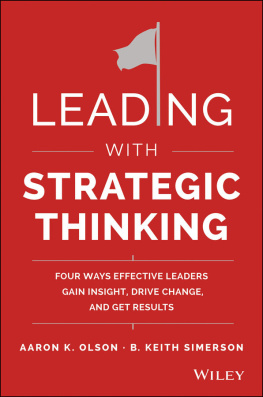Bookshelves abound with theoretical analyses, how-to guides, and personal success stories by famous corporate leaders, public officials, even athletic coaches, expounding on how to lead from the top. But what about those in the middle who are increasingly tasked with trying to reshape, reorient, or recreate the capabilities of an organization?
Leading Change from the Middle takes you on the journeys traveled by Kurt Mayer, an information technology executive in the Department of Defense trying to build a new IT system in record time with limited resources, and Stephen Wang, a mid-level leader in city government trying to build a capability for supporting commercial agriculture. Kurt and Stephen have to navigate complex organizational and stakeholder landscapes in which they often have few decision rights and few resourcesa common scenario for mid-level leaders. One succeeds; one does not.
While following Kurt and Stephen, the book introduces a new approach for increasing the likelihood of successfully leading change. This new approach breaks down into three core strategies:
First, identify all relevant stakeholders and partition them into four categories: superordinates, subordinates, customers, and complementors/blockers (those who control needed resources but over whom the leaders have no authority).
Second, for each stakeholder category, identify Communications, Strategies, and Tactics (referred to as CoSTS).
Third, don't stimulate negative emotions that make people DEAFDisrespect, Envy, Anger, and Fearto efforts to produce change.
As the book follows the journeys of Kurt and Stephen, it walks through the details of each strategy.
In presenting this material in a concise, accessible, and applicable format that translates theory to practice, Nickerson provides an important service for leaders trying to build extraordinary capabilities for their organizationsfrom the middle.
JACKSON NICKERSON is the Frahm Family Professor of Organization and Strategy at the Olin Business School at Washington University in St. Louis. He also is a nonresident senior fellow in Governance Studies at the Brookings Institution and director of the BrookingsOlin Executive Education partnership at Brookings.
Illustration and jacket by Rich Pottern Design
INNOVATIONS IN LEADERSHIP
The Innovations in Leadership series, a collaboration of the Olin Business School at Washington University in St. Louis and the Brookings Institution Press, offers books that are succinct, action-oriented, and pragmatic, focused on a wide range of problems facing business and government leaders today. Each title will offer practical approaches and innovative solutions to meet present-day challenges.
Washington University and the Brookings Institution share the indelible stamp of philanthropist and businessman Robert S. Brookings, an innovator in responsible private enterprise and effective governance, who founded the Brookings Institution and was a major benefactor of the university and chairman of its board of trustees. The series seeks to emulate Brookingss legacy in seeking and informing in order to achieve a balance in the public and private sectors leading to improved governance at all levels of American public and private life.
Also in this series:
Leading Change in a Web 2.1 World: How ChangeCasting Builds Trust, Creates Understanding, and Accelerates Organizational Change
Jackson Nickerson
Tackling Wicked Government Problems:
A Practical Guide for Developing Enterprise Leaders
Jackson Nickerson and Ronald Sanders, editors
Copyright 2014
THE BROOKINGS INSTITUTION
1775 Massachusetts Avenue, N.W., Washington, D.C. 20036
www.brookings.edu
All rights reserved. No part of this publication may be reproduced or transmitted in any form or by any means without permission in writing from the Brookings Institution Press.
The Brookings Institution is a private nonprofit organization devoted to research, education, and publication on important issues of domestic and foreign policy. Its principal purpose is to bring the highest quality independent research and analysis to bear on current and emerging policy problems. Interpretations or conclusions in Brookings publications should be understood to be solely those of the authors.
Library of Congress Cataloging-in-Publication data
Nickerson, Jackson A.
Leading change from the middle : a practical guide to building extraordinary capabilities / Jackson A. Nickerson.
pages cm. (Innovations in leadership)
Includes bibliographical references and index.
ISBN 978-0-8157-2522-0 (hardcover : alk. paper) 1. Organizational change. 2. Leadership. I. Title.
HD58.8.N4967 2014
9 8 7 6 5 4 3 2 1
Printed on acid-free paper
Typeset in Sabon and Ocean
Composition by Oakland Street Publishing
Arlington, Virginia
Preface
Several years ago my business school dean asked me to lead the renovation of an educational organizationfrankly, something that academics like me are not trained or developed to do. The organization in question, Brookings Executive Education (BEE), is actually a subunit of a larger organization, the Brookings Institution. I thought the challenge was particularly complex. For starters, I was (and still am) a professor and employee at the Olin Business School (Olin) of Washington University in St. Louis (WUSTL). My family and work were based in St. Louis while the organization was located in Washington, D.C., with employees who did not work directly for me. A substantial challenge was that any proposed change had to satisfy the constraints and bureaucracies of three institutionsBrookings, Olin, and WUSTL.
The renovation involved terminating many long-established but, by then, out-of-date capabilities, improving existing capabilities, and creating many new ones to help increase the value delivered to the participants of BEE courses and help the enterprise grow. Products and marketing, accounts payable and accounts receivable, curriculum and delivery, and an organizational cultureall needed renovation or creation. Some employee turnover was expected as well as personal transformation in order to achieve more desirable behaviors and build new competencies.
I needed guidance to help me with my leadership challenge. So, like any business academic worth his or her salt, I read or scanned many books and research articles on the management of organizational change. I searched on the Internet. I asked experts. Even though I had been researching and writing on organizational change for years and was familiar with the academic and practitioner literatures, I now saw a practical gap in my knowledge and understanding of what such change might entail. With the new challenge of having to actually and formally lead a complex organization, my perspective on the literature's recommendations changed.
I had many questions about renovating and building these new capabilities. How could I navigate the complex institutional landscape and ensure the success of such an endeavor? Where or with whom should I start? Should I engage in some activities before others? What pitfalls should I watch out for? How could I communicate successfully? How could I avoid battles with people at Brookings, Olin, and WUSTL while simultaneously asking them to change the way they did business and behaved? Ultimately, I wanted to know how I could be successful in my day job as an academic, while leading the renovation of a distant organization.

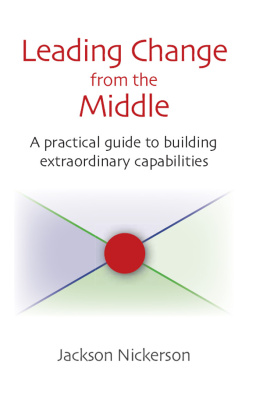
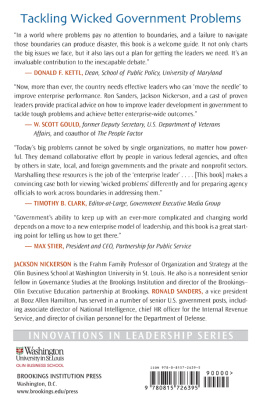

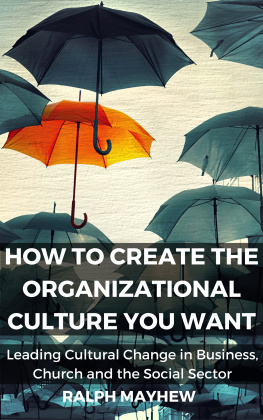

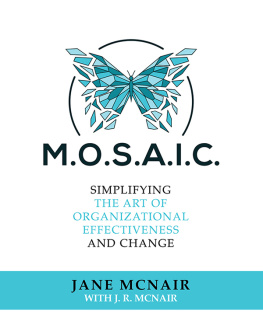
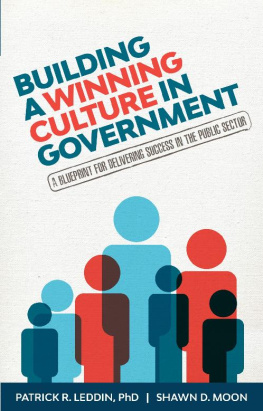
![Maxwell - The 360 [-degree] leader: developing your influence from anywhere in the organization](/uploads/posts/book/218782/thumbs/maxwell-the-360-degree-leader-developing-your.jpg)
